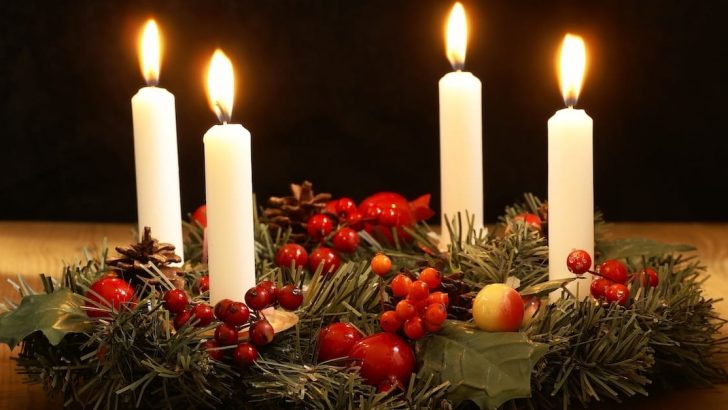‘Adveniat regnum tuum’ we pray in the Our Father – may your kingdom come. It is the heart of all Christian prayer since when the disciples pleaded with Jesus, “Lord, teach us to pray”, this is the prayer that he taught them.
So, what are we praying for when we recite the Our Father? In short, we are praying that the kingdom of God will come. The Kingdom of God lies ahead of us, but Advent is the season when we know acutely that it is brought near in the coming of Christ as the Word incarnate. Christianity is no mere call to the world that is to come. It is a call to live concretely in this world and work to make our society and Church fairer, honest and befitting disciples of Jesus Christ. The mission entrusted to believers on earth is to make the world more just and more peaceful.
There’s a beautiful poetry in the rhythms of the Church’s liturgical seasons. Advent, at least in the northern hemisphere, is the time of year when the light is dimming. The closer we come to the winter solstice, the greater the Church sets before us out need for hope and reassurance.
In the Jewish tradition, the people God chose as his own, this longing culminates in the lighting of the Hanukkah menorah. In Christianity, we mark off the weeks of expectation for Christmas by lighting the candles on our Advent wreaths.
Candle
The Advent wreath – like Holy Water and Rosary beads – is a sacramental and, as such, a pathway to holiness. The light dispelling the darkness is symbolic of the coming of Christ as “the light of the world”. We light the candle to ward off the darkness, climaxing in the light of Christ himself.
In an age of prosperity where heating and lighting are taken for granted by most people, it can be hard for these symbols to penetrate our technological minds. But, when the electricity goes out in a storm or there is a power-cut how quickly our vulnerability is exposed as we grope around for candles or anxiously fret about the battery running low on our mobile phones.
Christ comes to tell us not to worry in the midst of the darkness and the Evangelist St John reminds us of the coming of the Saviour as “a light that shines in the dark, a light that darkness could not overpower”.
St Luke paints a vivid picture of the beginning of the public ministry of Jesus in the synagogue in Nazareth when the Lord reads from the Prophet Isaiah that: “He has sent me to bring the Good News to the poor, to proclaim liberty to captives and to the blind new sight, to set the downtrodden free, to proclaim the Lord’s year of favour”.
It is what political correspondents might describe as a clear statement of intent. It was Christ proclaiming that things will not be – and cannot be – as they were before.
This is the challenge that is always before the Church: the task of pointing people towards the fulness of life with Christ in the world that is to come while at the same time working tirelessly to make this world a better place, with a particular mind to the poor and the powerless.
For his part, Jesus came not among the entrepreneurs and the conquerors but among the poor. And, by and large, it was the poor and the vulnerable who received his message – not the elites.
Advent is a time to prepare for Christmas – to learn to wait well. To step back from the frenetic pace of life and consuming and concentrate on what really matters and our obligation to those in need.


 Michael Kelly
Michael Kelly